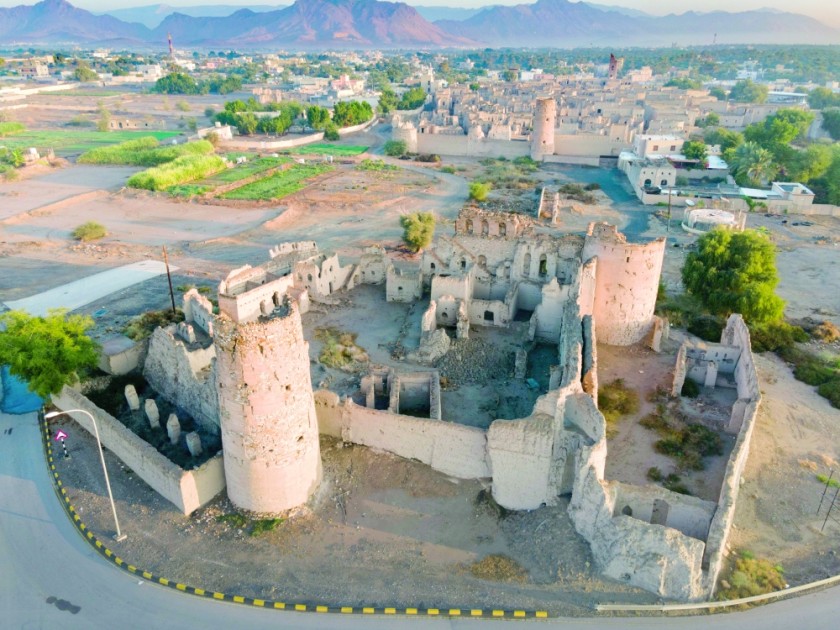

Manah: One of the oldest archaeological sites in Oman, Harat Al Bilad is a cultural treasure. Located in the Wilayat of Manah in the Governorate of Al Dakhiliyah, this architectural masterpiece contains four mosques, 376 ancient houses, and almost 250 wells which date back over nine centuries, opening a window into Oman’s vibrant heritage and shed light on the lives of ancient times.
Harat Al Bilad, an ancient settlement quarter (harah), is a fine example of fortified town on the desert borderlands, pierced by four gateways, surrounded by a stone and mud brick wall, and with two formidable watchtowers. #Oman #Manah pic.twitter.com/UIvPmoqFMX
— Oman Observer (@OmanObserver) November 6, 2022
Harat Al Bilad, an ancient settlement quarter (harah), is a fine example of fortified town on the desert borderlands, pierced by four gateways, surrounded by a stone and mud brick wall, and with two formidable watchtowers.
Before the Ministry of Heritage and Tourism initiated the conservation of Harat Al Bilad in the early-2000s, it had been uninhabited for decades and was quickly attaining a state of extreme dilapidation. This was when the government stepped in and purchased houses from owners. And today one can see the ancient Oman in modern Manah.
According to OmanTripper, a blog written by Ali Mohammadi documenting the beauty of Oman, "Harat Al Bilad is much more unique not only it is probably the largest old quarter neighbourhood (harah) in Oman, with a couple of really old mosques, but that it has also been preserved and restored in its entirety unlike, for example, Harat Al Yemen in Izki."

The history researcher, Khalfan bin Salim al Busaidi, a resident of Manah, in his book Grants and Gifts in the History of the People in Manah, said Harat Al Bilad dates back to the fifth century AD. The scholar Shaikh Nejad bin Ibrahim was among the first who settled in Harat Al Bilad and founded Al Yamania Quarter in 470 AD. Harat Al Bilad has been referred to by several names such as Manah Fortress and Fortress of bin Nejad. It was the seat of an active scientific movement and saw reproduction of many books and Fiqh encyclopedias.
The visitors of the harah, when entering the main door from the north, will find Bab Al Sabah, (Morning Gate), which was built close to the wilayat’s market, in addition to other doors scattered throughout the harah like Bab Al Qasab, Bab Al Nasr, Bab Al Rawla and Al Burj and Bab Al Dujain.
Inside the harah stands the long corridor that divides the harah into two halves, east and west, through the lanes, corners, corridors, narrow alleys, balconies, arches, gates and Sabla (public council) of sons of Rashid, Al Mutaila Sabla and the Bustan Sabla, where the people of harah used to meet.
Harat Al Bilad includes 4 old mosques spread along its central passage: Al Ali, Al Ain, Al Shara, Al Rahba, and Quran schools, in addition to a furnace that was used in certain occasions. It also has natural springs like Ain Bani Nejad, named after Shaikh Nejad bin Ibrahim, which is a Waqaf property.
Omran handed over the Harat Al Bilad project, which was recently restored by the Ministry of Heritage and Tourism, to Al Amara Al Ariqa Company in 2018. Al Amara Al Ariqa, under this agreement, undertakes all the management of this historical harah that attracts a lot of tourists as it is one of the ancient cultural settlements in the Sultanate of Oman.
Oman Observer is now on the WhatsApp channel. Click here



